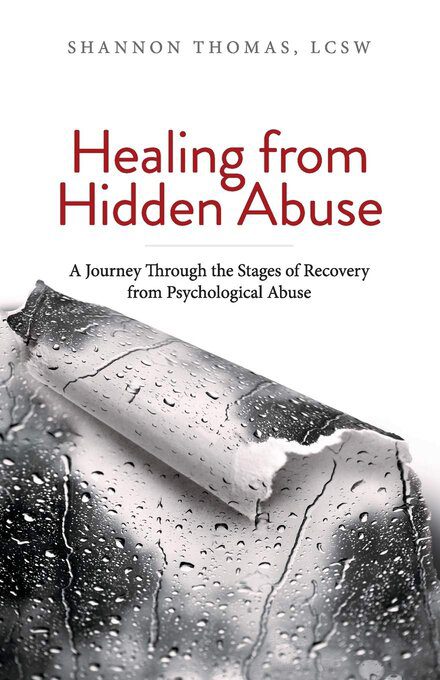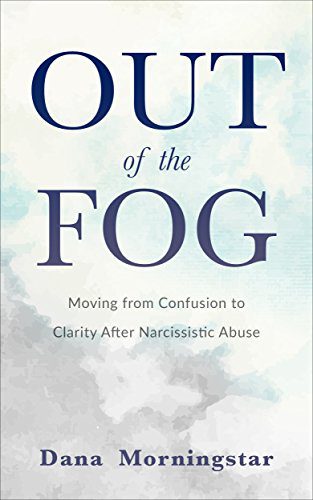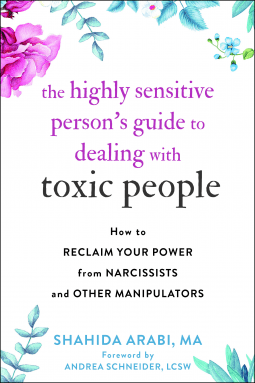Our relationships determine the direction and how far we go in life. At the root of all our issues is how we manage our relationships with other humans, situations and things. We stay in toxic/abusive relationships that are not helping us fulfil our purpose because it is all we have ever known, the familiar, which is the root of family. Family should always be there for you. Right? But the reality of life is that your so-called family might switch up on you at some point. They accuse you of changing, feeling superior, and becoming condescending and arrogant. Your family is not necessarily a bloodline; it is how people treat you during the hard times that shows who your true family and friends are. As the saying goes, we know our friends during adversity, and our friends know us during prosperity.
Most of us stay in toxic relationships due to our trauma/misplaced sympathetic bond with our abusers because they are familiar, and as humans, we move towards the path of least resistance. We are scared of being alone; hence, we people-please, live our lives on autopilot, not rocking the boat. It is better to be alone and healthy than among dysfunctional, unhealthy humans abusing us emotionally, psychologically and otherwise. It is tough leaving toxic relationships as the chemical imbalance and trauma bond make us stuck with our abuser. Still, by educating yourself about these unhealthy relationship dynamics, you can free yourself from these bonds.

In Healing from Hidden Abuse: A Journey Through the Stages of Recovery from Psychological Abuse 1, author and certified trauma therapist Shannon Thomas writes about the subtlety of the psychological abuse one can go through as a result of staying in toxic and abusive relationships. She asserts:
Psychological abuse leaves no bruises. There are no broken bones. There are no holes in the walls. The bruises, brokenness, and holes are held tightly within the target of the abuse.
Within every community, toxic people can be found hiding in families, couples, companies, and places of worship. The cryptic nature of psychological abuse involves repetitious mind games played by one individual or a group of people. Psychological abuse leaves no bruises. There are no broken bones. There are no holes in the walls. The bruises, brokenness, and holes are held tightly within the target of the abuse.
The behaviors of the abuser(s) involve chronic and repetitive secret games being played by one individual, or a group of people against a target. These actions are so well disguised that their venom frequently goes unnoticed. It is similar to clear toxins placed in a glass of water; one cannot see the injury being done until the body starts reacting to the prolonged exposure of the poison. This is exactly the way abusers plan it with psychological abuse. Covert, hidden, sneaky, and off-the-radar are all part of their agenda.
Psychological abusers set out to trick people, and they know exactly what they do. They actually know better than anyone the lies they tell, the games they play, and the enjoyment they derive from controlling others
Psychologically abusive people can only maintain normalcy for short spurts of time. Being an authentically caring, decent person isn’t baseline for them. They must fake the behaviors that would show these positive character qualities. These fraudulent acts of kindness have brief shelf lives before they expire and the abusers return to their normal state of affairs. 1

Trauma Bonds 2
Trauma bonds are the result of the good times being really good (the idealization phase), and the bad times being really bad (the devalue or discard phase)—which is what tends to make up the highs and lows of an abusive relationship. This emotional coaster ride is a type of intermittent reinforcement. These trauma bonds are the bonds that are forged between the captive who empathizes with their kidnapper, the prostitute who loves her pimp, the abused spouse who loves their partner, the cult member who defends their cult leader, the hostage who befriends or defends their captor, or the abused or neglected child who defends their abusive parent’s behavior.
Any type of one-sided unhealthy bond between two people that is forged through any type of abuse or exploitation to any degree that results in a target defending the person who is using, abusing, exploiting, or neglecting them is a trauma bond.
Healthy Bonds 2
Healthy bonds develop between two people over time as two people go through the highs and lows of life together. Healthy bonds are based on mutual trust, support, dignity, and respect, and include open, honest, sincere, and solutions-oriented communication and behavior. Healthy bonds are formed when both individuals are able to get their wants and needs met both by themselves and within the relationship or dynamic. There is a feeling of certainty, clarity, and calm around the other person, because appropriate trust has been established and maintained.
There is a feeling of deep appreciation and admiration for the other person. There is no hidden selfish agenda or behavior. There is no using, abusing, or exploiting the other person. There is no manipulating another person’s emotions in order to keep them around. There is no being dragged through hell hoping that someday the other person will treat them right. There is no hiding their partner’s mistreatment of them or their relationship from others because they are embarrassed by how they are being treated. There is no “I love you, but I hate you.
Healthy bonds are formed when both individuals are able to get their wants and needs met both by themselves and within the relationship or dynamic.
Stockholm Syndrome – Misplaced Sympathy
Stockholm syndrome is when a person has feelings of misplaced pity or sorrow for a destructive or dangerous person based on the traumatic situation that the controlling person is putting them through. It’s considered to be a psychological defence mechanism where good and decent people look for signs that this person is somehow good and decent, so their brain can keep calm by holding onto crumbs of hope that this situation can work out and that they can survive it.
The emotions and experiences that are shared during an emotional time like this come from both misplaced sympathy that stems from “reverse projection” where we are projecting all of our good qualities onto them, instead of seeing them and their actions for what they are. In addition, these situations are often a roller coaster of extreme highs and lows which confuse a person’s brain and lead them to link up a series of misplaced cause and effect, and in turn alter their behavior in an attempt to control their environment so that they can “survive” it. All of these highs and lows, misplaced sympathy, and “reverse projection” form unhealthy bonding known as “trauma bonds” and make up what’s known as Stockholm syndrome.
Stockholm syndrome is a term that was coined after a bank robbery in the 1970’s where it was first noticed that there were seemingly illogical and irrational emotional bonds that had developed between bank robbers and their hostages—to the point where the hostages defended their captors and described them as “lovely” and “nice” during and after their hostage situation. While the police were trying to rescue them, the hostages became angry and distrustful of the police—despite the fact that their captors had threatened to kill one of the hostages and had another sit with a noose around her neck for several days. Researchers concluded that the hostages had developed illogical and irrational bonds with their captors as a psychological defense mechanism in order to prevent emotionally collapsing. If they could convince themselves that their captors weren’t “that bad” or were somehow normal, decent people, then it would give them hope that they could survive the situation.
Stockholm syndrome is when a person has feelings of misplaced pity or sorrow for a destructive or dangerous person based on the traumatic situation that the controlling person is putting them through.

Why We Stay: A Biochemical Addiction 3
Trauma from toxic relationships hijacks our “emotional brain,” affecting areas like the amygdala and hippocampus, while bringing the thinking part of our brain, the prefrontal cortex, offline. These areas of the brain affect our emotions, self-control and impulsivity, reactions to threat, memory, learning, planning, and decision making (van der Kolk 2014).
Trauma also interferes with the communication between the right and left hemispheres of the brain, deactivating the left hemisphere, which causes us to lose executive functioning—the ability to organize our experiences into a coherent narrative, solve problems, and make beneficial decisions.”
“Remember this before you blame yourself for behaving in what appeared to be a nonsensical manner; your brain was working against you in a time of extreme chaos. At the root of abusive relationships is what trauma experts label trauma bonding—creating ties during intense emotional experiences in which we bond with our “captors” to survive.”
A checklist you can use to help you determine whether you’re in a trauma bond with a toxic manipulator. Go through the following statements, checking all that apply.
- You feel physically and emotionally exhausted after even just one interaction with this person. Your energy feels drained, and you may even feel immobilized or paralyzed.
- You experience physical symptoms of anxiety around this person—for example, your heart beats faster, your palms sweat, you develop sudden migraines, your skin breaks out, or you experience gastrointestinal or other health issues that seem to come out of nowhere.”
- Your productivity suffers. You experience interruptions in learning, memory, planning, focusing, judgment, and decision making when around or after interacting with this person.
- You find yourself being taken advantage of repeatedly—rather than being in a reciprocal relationship, you tend to be the “giver.” The other person “uses” you for your resources, your time, and your efforts, usually without returning the favor.
- You experience diminished self-esteem after being around this person. Their comments and toxic behaviors make you feel worthless, lacking, or ashamed of yourself in some way.
- You are aware that they are manipulative and toxic, but you feel unable to “let go” of the relationship. Due to your trauma bond with them, you find yourself rationalizing, minimizing, or denying their abusive behavior. You feel an intense addiction to them, regardless of how terribly they treat you.
- Even when you’re no longer in their presence, you find yourself obsessing over their words and actions, unable to make sense of who they really are. You develop an intense preoccupation with the relationship. A conversation with them over something that should have a simple solution leaves you feeling disoriented and confused.
- Your emotions have a “yo-yo” effect whenever you’re communicating with them. One second, you’re confident and self-assured. The next, you’re feeling deflated and traumatized. This is due to the manipulator’s “Jekyll and Hyde” behaviour—they’re sweet when they need something and mean when they want to establish control.
- Your energy and mood lift after you are away from this toxic person for a few days or weeks, however long it takes you to “detox” from them.
- You find yourself second-guessing everything, including your perception of reality. The toxic manipulator often denies things they said or did, and you start to wonder if you’re “imagining” things. They gaslight you into believing that your experiences and emotions aren’t valid.”
- You experience a high degree of conflicting thoughts, beliefs, and emotions whenever you’re interacting with this person (in psychology, we call this cognitive dissonance, which can be an extremely disorienting and distressing state). They can switch from kind to spiteful quickly, and this leaves you feeling increasingly anxious and confused about their true character and intentions.
- You experience a deflated sense of self-esteem and agency over your life. You develop feelings of powerlessness and learned helplessness whenever you’re in active communication with this person. 3
Meditation
- Daily Calm with Tamara Levitt – Grit
- Daily Jay with Jay Shetty – Outside Help
- When we need to decide or take action with huge consequences for ourselves or others. Instead of relying solely on our own reasoning or ability, we can let the best person for the job lead the way; this isn’t always easy. Sometimes, we think we know best and we want to be self-sufficient so we refuse outside help.



Comments are closed.